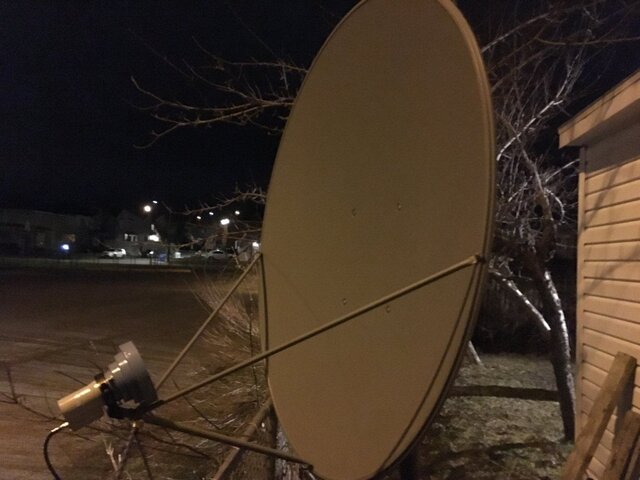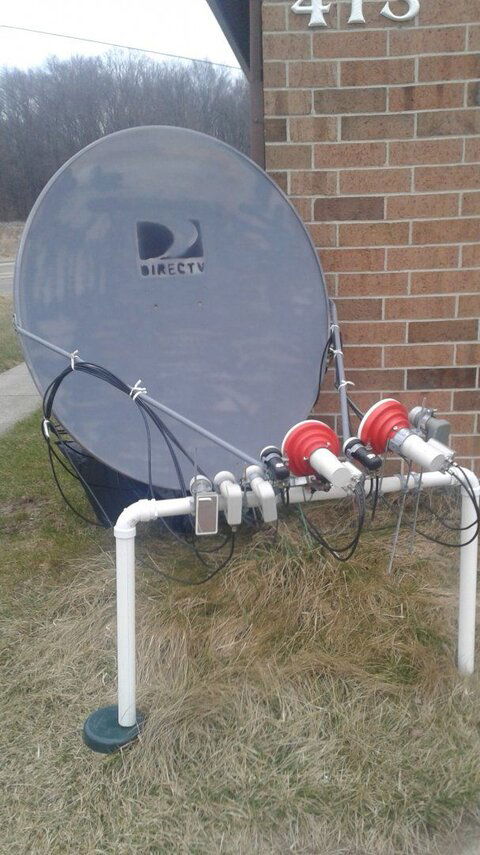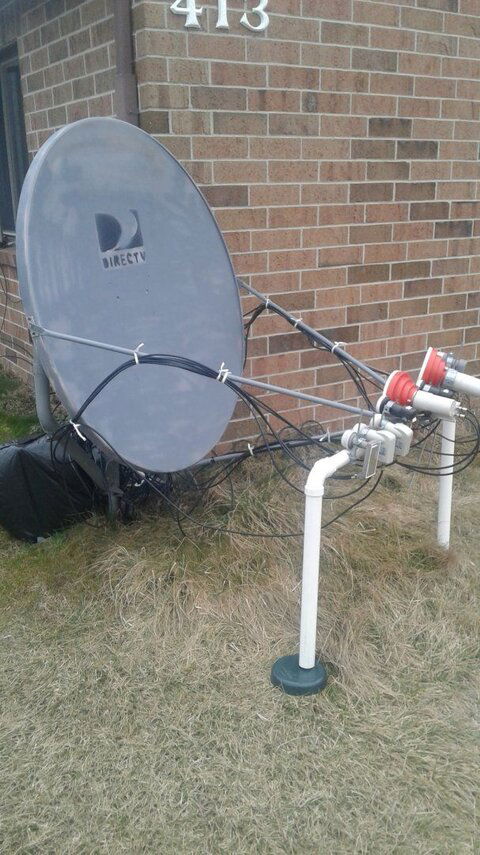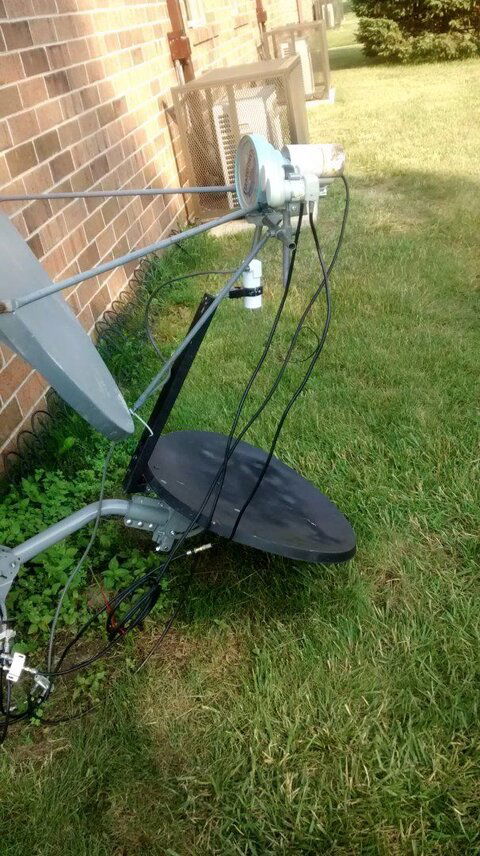Every time it rains my c band lnb on my 4ft geosatpro fills up with water. Last time, i swapped for another c band lnb while the wet one dried up in the shed. This time, the back up lnb had smudge inside, so i cleaned it up with a hand towel and a tooth brush. I even used my wife's hair dryer, in both lnbs. The dmsi model ended up working but i think the smart sat model died. The main problem is that V polarity end up not working after a rain storm while H polarity still works. The conical scalar ring and the lnb angle doesn't help. My 4ft prime focus dish doesn't have that problem. I'll attach a picture to this post to help understanding the water collecting problem. Thanks for your inputs!
Minibud lnb problem
- Thread starter etlam34
- Start date
- Latest activity Latest activity:
- Replies 12
- Views 2K
You are using an out of date browser. It may not display this or other websites correctly.
You should upgrade or use an alternative browser.
You should upgrade or use an alternative browser.
well, yes, that's typical of offset dishes at higher latitudes and anywhere when pointing at low elevation satellites. i read somewhere of someone drilling a small drainage hole in the bottom part of the c-Band waveguide. This said, i'd think that an LNBF cap with only one hole (mounted os that the hole is near the top) or no hole at all, should resolve this problem. I have a 2-year old Titanium LNBF and i think it has multiple holes and would get small amounts of water during storms when it was on my mini-bud. I also have a brand new Titanium C2-PLL, and the cover is solid, no holes. So that would probably be your best solution.Every time it rains my c band lnb on my 4ft geosatpro fills up with water. Last time, i swapped for another c band lnb while the wet one dried up in the shed. This time, the back up lnb had smudge inside, so i cleaned it up with a hand towel and a tooth brush. I even used my wife's hair dryer, in both lnbs. The dmsi model ended up working but i think the smart sat model died. The main problem is that V polarity end up not working after a rain storm while H polarity still works. The conical scalar ring and the lnb angle doesn't help. My 4ft prime focus dish doesn't have that problem. I'll attach a picture to this post to help understanding the water collecting problem. Thanks for your inputs!
Large plastic tubs like margarine comes in have plastic lids that will fit tightly over the conical scalar. Doesn't block the signal and keeps the water out. 
I'll try the margarine lid! I've tried swapping caps between lnbs and it didn't work out. Maybe i could put the titanium lnb on the geosatpro and the holed cap on the prime focus dish.
First of all, it is necessary to drill drainage hole in the body of the LNB (as an example, on attached picture I circled yellow) 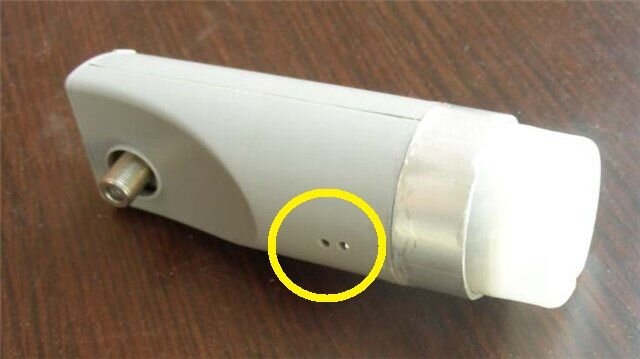 . Secondly, I personally think that usual LNB with conical feedhorn is not the best solution to be used on an offset dish. Look for something like this, where dielectric feedhorn is inside the cylindrical plastic cover.
. Secondly, I personally think that usual LNB with conical feedhorn is not the best solution to be used on an offset dish. Look for something like this, where dielectric feedhorn is inside the cylindrical plastic cover. 
 . Secondly, I personally think that usual LNB with conical feedhorn is not the best solution to be used on an offset dish. Look for something like this, where dielectric feedhorn is inside the cylindrical plastic cover.
. Secondly, I personally think that usual LNB with conical feedhorn is not the best solution to be used on an offset dish. Look for something like this, where dielectric feedhorn is inside the cylindrical plastic cover. 
I started covering the entire LNBF and conical scalars with heavy plastic bags. Since the the prime focus design feed horns are designed to point down, not up as I have them on my 3 Prodelin offset dishes. I gave up trying to keep various caps over the scalars, the water was still getting in over time despite my best efforts.
Be sure to rotate the skew to place the horizontal/vertical probes pass-throughs on the top of the feed housing and not on the bottom where water build-up might stream or leak into the electronics cavity.
If mounted on a fixed dish, after optimizing the skew, drill a hole through the bottom or ear of the feedhorn cavity at the 6 o'clock position. This will allow collected water (remember also the condensation) to drain out of the cavity. Check the drain occasionally as even a small amount of pooled water will negatively affect the signals inside the feed.
If mounted on a fixed dish, after optimizing the skew, drill a hole through the bottom or ear of the feedhorn cavity at the 6 o'clock position. This will allow collected water (remember also the condensation) to drain out of the cavity. Check the drain occasionally as even a small amount of pooled water will negatively affect the signals inside the feed.
Similar threads
- Replies
- 10
- Views
- 537
- Replies
- 0
- Views
- 430
- Replies
- 9
- Views
- 2K
- Replies
- 2
- Views
- 1K


